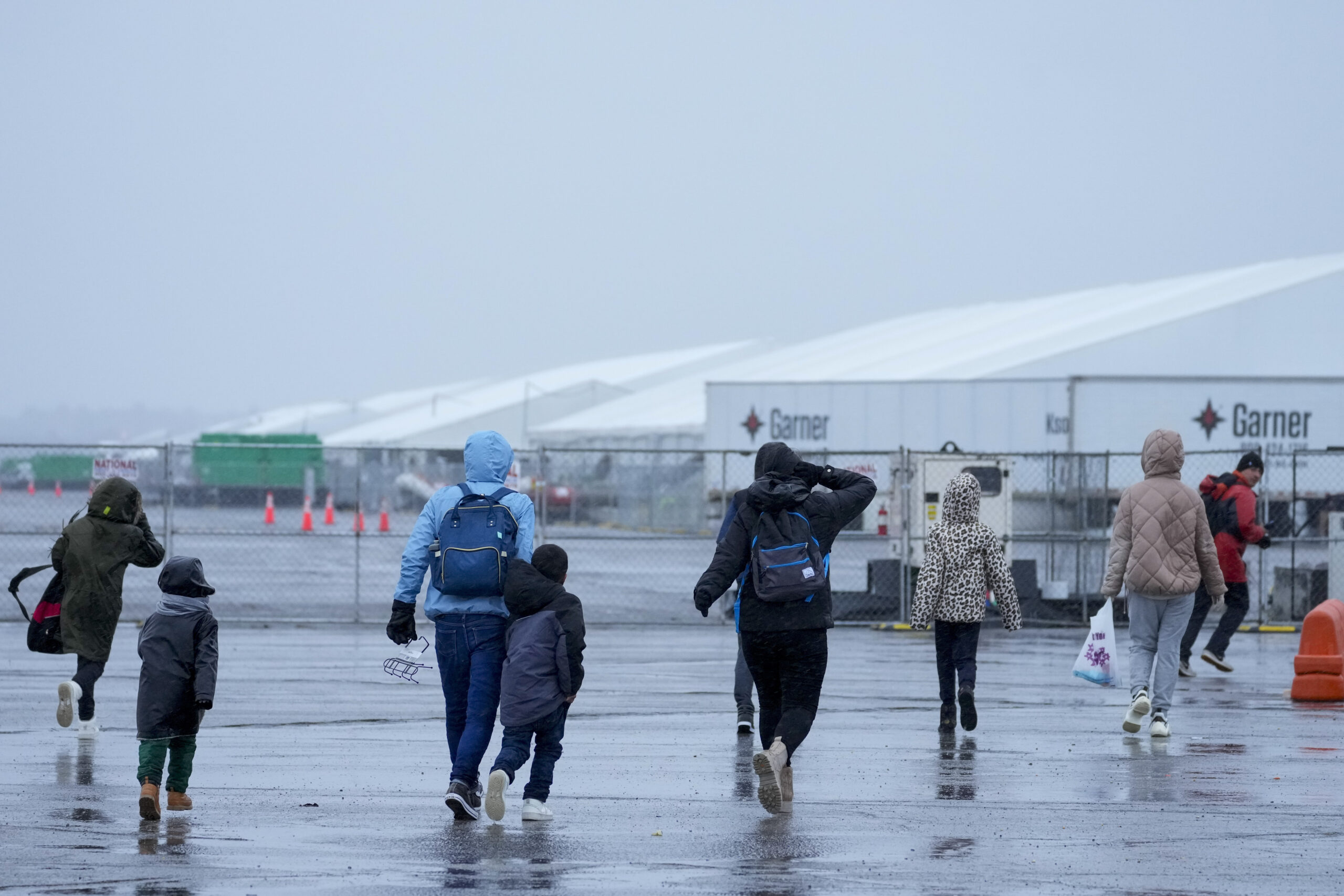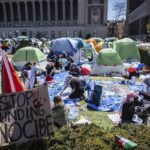

The Biden administration has admitted hundreds of thousands of immigrants who are not on visas or green cards, raising concerns among Republicans who view the programs as legally indefensible and a roundabout way to lower illegal immigration numbers.
Over the past year and a half, the Biden administration has rolled out a phone app to help migrants outside the United States seek ways to seek admission, as well as offices in South and Central America for migrants to seek help without having to pay cartels thousands of dollars to smuggle them into the country.
In a hearing on Capitol Hill this week, Department of Homeland Security officials were dragged by Republicans who claimed the programs were merely a loophole in the law that the Democratic White House was using as a backdoor to admit migrants.
Below are the three programs and the controversy associated with each one:
CBP One app at the Mexico border
In January 2023, the DHS announced it was expanding U.S. Customs and Border Protection’s phone app, the CBP One, to include a new feature that would allow migrants who had made the journey to Northern Mexico but not yet crossed into the U.S. to apply for an appointment with a U.S. customs officer rather than enter illegally.
By using the app, migrants could submit biographical information in advance and schedule an appointment at a specific time and date to determine if they met the criteria for being released into the country while waiting for formal immigration proceedings.
“The application provides a safe and orderly way for certain noncitizens to present at POEs, unlike attempting to cross U.S. borders without authorization,” the DHS said in a statement.
Information provided by users, including a picture, could be reviewed and screened against multiple criminal and terrorism databases. Only 1,450 appointments can be scheduled per day.
Diane J. Sabatino, acting executive assistant commissioner at CBP’s Office of Field Operations, testified before the House Thursday that the average wait time for an appointment was two and a half months.
“I can highlight a number of instances over the last 10 years where migrants showing up at our port of entry without any advanced information quickly overwhelmed our teams and then redirected our teams from doing things,” Sabatino said.
CBP One app for immigrants in Cuba, Haiti, Nicaragua, and Venezuela
The Biden administration announced more than a year ago that it would admit up to 30,000 immigrants from Cuba, Haiti, Nicaragua, and Venezuela each month through the CBP One app — only in this instance, the app would be accessible for migrants from those countries who were not in Mexico.
This new initiative would allow migrants to fly into the U.S. for inspection, where they could then potentially be paroled into the country.
Through the program, residents from those countries request “advance travel authorization” through the CBP One mobile app to take commercial flights “at their own expense” directly to U.S. airports. The app itself does not grant parole.
DHS provided figures to the Washington Examiner on Friday that revealed 386,000 Cubans, Haitians, Nicaraguans, and Venezuelans had arrived in the U.S. under this process through February 2024.
Citizens of those four countries who are applying from abroad to fly into the United States for an appointment with customs at the airport must have a sponsor in the country willing to financially support them; undergo security vetting; proof that they can pay for a plane ticket to a U.S. airport; have been vaccinated for measles, polio, and the coronavirus; and travel within 90 days.
Once in the U.S., a CBP officer will determine if the immigrant should be granted parole and given permission to reside in the U.S. for two years if they meet “urgent humanitarian or significant public benefit reasons.” The Immigration and Nationality Act of 1965 does not specify what “urgent humanitarian” or “significant public benefit” can include or not include.
Regional processing centers or “safe mobility offices”
Last April, the U.S. announced plans to open regional processing centers in several South and Central American countries that immigrants most often travel through to get to the U.S. Its first processing centers were set up in Colombia and Guatemala. Three more were opened in Ecuador and Costa Rica.
“Individuals from the region will be able to make an appointment on their phone to visit the nearest [regional processing center] before traveling, receive an interview with immigration specialists, and if eligible, be processed rapidly for lawful pathways to the United States, Canada, and Spain,” according to a government fact sheet that outlined the policy changes.
Migrants may be deemed eligible for refugee resettlement, humanitarian parole, family reunification, labor pathways, and seeking asylum in host countries.
DHS Secretary Alejandro Mayorkas admitted that the centers would only be capable of processing up to 6,000 people a month— roughly the number of immigrants arrested attempting to enter the U.S. illegally every day in the last two years.
Rep. Clay Higgins (R-LA) was concerned during Thursday’s hearing that by placing facilities in other countries where immigrants could seek admission, it was pushing out the country’s borders.
“If you have legal authority to establish regional processing centers in Ecuador, Colombia, Guatemala and Costa Rica … then why can’t you, can’t you put those up everywhere in the world,” said Higgins. “We no longer have a sovereign border to defend and enforce our laws.”
CLICK HERE TO READ MORE FROM THE WASHINGTON EXAMINER
Adam Hunter, deputy assistant secretary for immigration policy at DHS’s Office of Strategy, Policy, and Plans, said the objective was to cut out the smuggling organizations that would otherwise exploit vulnerable people.
“What we are doing through CBP One is trying to cut out the smugglers at every step we can. So by putting more power in the hands of the individual migrants,” said Hunter. “We’re taking that power away from the smuggling organizations.”







